Is there some standard way to get information about BJT (Bipolar Junction Transistor) rise and fall times (the high power ones) ? In essence a IGBT is a BJT being driven by a FET, so there should be some high-power, medium-speed BJT.
Asked
Active
Viewed 4,403 times
8
-
What is the question? – pjc50 Sep 11 '13 at 09:58
-
@pjc50 I added an question mark for being more easy for you to get the question :) – Diego C Nascimento Sep 11 '13 at 10:05
-
high-power BJTs are dinosaurs, and if they're not already discontinued, I would not rely on their continued existence. IGBTs and MOSFETs have essentially supplanted the entire power BJT market. – Jason S Sep 16 '13 at 18:56
-
@JasonS first, what is high-power is relative in the context. In case of BJT >1A of continuous current is considered high power. I don't think this transistors are "dinosaurs", and as current controlled devices don't think they are supplanted. As the post says IGBT are in essence a MOSFET driving a BJT, and you know that MOSFETs are not yet good for >100V (high rdson), so in theory IGBTs (insulated gate bipolar transistor), are the BJTs in the market today. – Diego C Nascimento Sep 17 '13 at 13:25
-
1That's the link posted by some user that removed it later. It have the models for small signal and large signals BJT http://ecee.colorado.edu/~bart/book/book/chapter5/ch5_6.htm – Diego C Nascimento Sep 17 '13 at 13:27
-
"and as current controlled devices don't think they are supplanted" -- ah, you are correct about that... although the current gain in power BJTs is usually around 10 or 20. I am curious though, what kind of circuit function do you need for a current controlled device? – Jason S Sep 17 '13 at 13:49
-
@JasonS that gain as I know is for very high-power BJTs. I'm referring to the ones in the 1-5A continuous current. My question is to knowledge at first, but the use is for direct driving pulse-transformers to drive the gate of IGBTs :) Yes that can be done with MOSFETs, but for full-bridge you will need a P-Channel if you don't want to complicate the drive circuit, and as P-Channel, the popular ones have high rdson. – Diego C Nascimento Sep 17 '13 at 16:20
-
Hmm. What does your drive circuit look like? The response time of BJTs is much different in common-emitter configuration (inverting switch) than it is in a common-collector configuration (voltage follower). If you're using a voltage follower, I totally get it, and BJTs are the most likely the right choice. I'm surprised you need that much current though! – Jason S Sep 17 '13 at 20:26
-
@Jason S Well it can be doing in the two aways, as the drive tension can be the necessary one, but I think most of cases in common-emitter. Why are you surprised? Some schematics use BJT to drive MOSFET, with the pulse-transformer as the load. That means a lot of current. Of course is a pulsed current, but the peak shout get to 5A easy depending on the switch the pulse-transfer will drive. In my case IGBTs for a welding machine. – Diego C Nascimento Sep 17 '13 at 20:56
-
If you use common-emitter, you're almost always better off using a MOSFET. If you use common-collector (voltage follower), use a BJT because of the smaller Vbe drop. For BJT common-emitter is slower, because of the feedback capacitance from collector to base. – Jason S Sep 18 '13 at 14:18
-
@JasonS common-emitter is slow compared to "voltage-follower"? Well that's new to me, thanks for the info. Anyway using a BJT is justified by the easy drive requirement of the top switch (and perhaps in some situations don't needing to use "logic level" MOSFETs that are not that easy to find as a TIPxx) – Diego C Nascimento Sep 18 '13 at 14:33
-
I still can't picture the circuit topology you're using, it would be helpful if you could post a sketch. – Jason S Sep 18 '13 at 19:45
-
@JasonS I'm not using one, that's why I asked so I can research if the BJT rise/fall times will not degrade the performance. But yes I can show you some schematic not mine when I have time. – Diego C Nascimento Sep 18 '13 at 19:47
1 Answers
5
Sure. Not all manufacturers specify the data for all their BJTs, but there are good data sheets around, for instance the 2SA2090.
Page 2 lists the delay times for a specific base current (Ton, Tstg, Tf):
(Source rhom.com)
Page 3 has a detailed test circuit and shows how to interpret the waveforms obtained using the test circuit:
(Source: rhom.com)
try-catch-finally
- 1,254
- 3
- 19
- 37
zebonaut
- 18,170
- 4
- 60
- 104
-
Yes, but that's a small signal transistor (well 0.5A is not that small depending on the context). Small signal transistor have more information, but power BJTs does not have such information, just the output capacitance, that as I read, is what I should consider. – Diego C Nascimento Sep 12 '13 at 04:24

